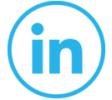Linda Elsegood: Welcome to the LDN Radio Show brought to you by the LDN Research Trust. I'm your host Linda Elsegood. Today I'd like to welcome our guest Pharmacist Suzanne Rosenberg from Community Compounding Pharmacy in Oregon.
So could you tell us what made you decide to become a pharmacist?
Suzanne Rosenberg: When I was in undergraduate school at Temple University in Philadelphia, which is my hometown, I worked at a pharmacy and I loved it. I loved working with people. I just loved everything about it and so when I graduated with my degree in psychology I applied to Northeastern University in Boston, Massachusetts and started pharmacy school two months later. I received my pharmacy degree from Northeastern.
Linda Elsegood: Have you always stayed in the Oregon area?
Suzanne Rosenberg: After I graduated pharmacy school I got in my car and drove to Portland, Oregon to visit some friends. I never left. That was 27 years ago. I've been practicing as a pharmacist exclusively in the Portland, Oregon area.
Linda Elsegood: When did you buy the pharmacy?
Suzanne Rosenberg: I moved to Portland and I worked for small independent pharmacies. I got really interested in herbal medicine. There was a company called Wild Oats that opened a large store and they had an idea where they put a pharmacy with naturopathic medicine in this grocery store with a yoga studio. They asked me to manage it. I did for six and a half years. I managed this pharmacy and turned it into a compounding pharmacy. Then another local chain recruited me and I did that for four and a half years. Then I decided that I had all these ideas of things that I wanted to do. Fifteen years ago I started Community Compounding Pharmacy in Lake Oswego, which is a suburb of Portland. It's a compounding only pharmacy. We predominantly work with integrative practitioners which I've been working with for over 23 years. I work with naturopaths, functional medicine doctors, integrative practitioners all over the West Coast. We started mainly in Portland, in the Northwest, but now we work with integrative practitioners up and down the West Coast.
Linda Elsegood: Please tell us about your pharmacy. How big is it? Do you do sterile and/or non-sterile compounding?
Suzanne Rosenberg: We're fortunate that we only do non-sterile compounding. We're about 10,000 square feet. We have about 45 employees. We're open six days a week and we ship all over the nation, predominantly on the west coast and certain states on the east coast. Mostly on the west coast; Colorado, Arizona, Alaska, Hawaii. On the east coast: New York, Maine, Vermont, Connecticut. We are pretty much licensed mainly on the east and the west coast. We have been fortunate to have an extremely amazing staff that really supports our patients and our doctors and one of our focuses at Community Compounding is education. If you go to our website what you'll find is that we really focus a lot on education. We do that in two ways. One is we actually offer continuing education twice a year for the naturopathic community, although nurse practitioners are able to get the Continuing Education Credits as well. We actually just had one on Saturday and LDN was a big topic because it is for most ailments. One of our topics uh was PANS and PANDAS which is predominantly a childhood situation where they get inflammation. Low dose naltrexone (LDN) is a treatment for that and one of our doctors, Dr. Sarah McAllister spoke on Saturday at this conference and brought up LDN. In addition to that we also make it a priority to offer education for our patients. Patients have access to our pharmacist. We have four pharmacists on staff each day. One of the things that we really pride ourselves on is making sure that if a patient calls and has a question that their questions are answered in real time. In addition to that, every prescription, before it goes out, gets a personal phone call from one of our pharmacists to counsel them and make sure that they understand what this medication is used for, how to properly take it and just ask any questions that they may have before that prescription goes out to them.
Linda Elsegood: Education is key. I would say pharmacists, even though they’re busy people have more time to do the research than doctors do. You are the people that educate the doctors and do the hand-holding and explaining to the doctors. They are not experts in drug interactions. That's the job of the pharmacist. We find the pharmacies that spend the time on educating their doctors help so many patients because you get a new doctor on board. How many patients does that new doctor prescribe LDN for? Then that doctor meets up with other doctor friends and they invariably end up talking about problem cases. Then LDN comes up and it's easier for the pharmacist who deals with that doctor to mention LDN because of a light bulb moment. I was talking to a colleague who talked about LDN but I don't know much about it, I don't know how to prescribe it. Without the pharmacist being so well educated themselves about LDN they wouldn't be able to convert the doctors into LDN prescribers.
Suzanne Rosenberg: I’m trying to convert doctors in Oregon. Oregon is kind of one of the meccas of alternative medicine. In Portland and in Oregon in general we have a lot of information. We have a really tight integrative community here and it's really neat to see. They teach each other, they're supportive of each other. It's a really neat place. I feel very fortunate that I get to practice in Portland, Oregon and in the northwest. It's a really special place. Especially as an integrative pharmacist. My entire pharmacy is an integrative pharmacy. Our model is different from some of the other compounding pharmacies in the city who I have a ton of respect for. Ours is different in the sense that a lot of the other compounding pharmacies will market to doctors who are more focused on allopathic. We do work with allopathic practitioners. We are the main compounding pharmacy for OHSU. Alll of their LDN from Oregon Health and Science University or at least most of it they have a tight relationship with us. Our model is different in the sense that we really only market and seek to educate alternative practitioners at this point.
We are licensed all over the nation and I personally will travel. I have another woman, Holly, who also helps me. And we meet with naturopaths, functional medicine doctors, integrative practitioners, doctors who are interested in learning alternate ways of treatment. What we see as our role is to go out throughout the nation and meet with these doctors. That's really our focus. We work with doctors all over the nation. We actually will travel and we do what we call a lunch and learn. On our website you can actually go onto our website and there's a doctor portal on there. In that doctor portal you can actually request lunch and learn. We go and we sit and we meet with these doctors. We go over integrative products that we have. A lot of them have never heard of these formulas. Because we work so closely with the integrative practitioner group in the northwest we're actually creating formulas, including using LDN. We've been using a lot of LDN topically at Community Compounding. We have a formula now that we're really proud of that is a topical LDN for lichen sclerosis with some herbs in it, as well as, some hormones. We also use LDN topically when it comes to psoriasis and eczema. We use that in conjunction with a product called Ketotifen which is a mast cell stabilizer. What we do is we use LDN orally but we've also been utilizing a lot in our topical preparations. And we use a lot of integrative treatments for hair loss, skin conditions, gut, gut health and will intake different products and combine them for these new products that a lot of doctors haven't heard of because they're predominantly products that we've created with doctors in the northwest. It's really neat to go out and share these products with our doctors. All of this stuff actually is available in this doctor portal on our Community Compounding Pharmacy website; you'll find it. You will need to ask for access. My assistant will send you a code within 24 business hours. You'll have access to all of our prescription pads, all of our research articles that we have in there, and recommendations for treatments.
I have a pamphlet about a talk that I had done in January in Hawaii for some naturopaths. It is is a little pamphlet of our top 20 formulas that our pharmacists love. Not all of them are things that we do every day but they're things that patients have come back to us and said, “Wow this really works.” Or they say, “A doctor says that formula is amazing.” Then they start telling their colleagues. That's a new thing that we just came out with a couple months ago. It was serendipitous. We didn't intentionally plan to put this together but I did it for a talk and handed it out to some doctors and they loved it. So now we have a list of the top 20 formulas that we wanted to share and we'll be adding to that regularly as things come up. A place to get a lot of information is on the doctor portal.
Linda Elsegood: You mentioned Dr. Sarah McAllister, (you can put her name in YouTube you will see that I interviewed her many years ago. Maybe even as many as 15 years ago.) It's been a long time since I have spoken with her. She is a very nice young lady.
Suzanne Rosenberg: She's amazing. Her talk was amazing. If anyone's interested in learning more about our talks you can go online. This one we just had recently, so in about two weeks the lecture will be available. If you're interested in learning or you know can't attend any of our webinars they are in person and they are also webinar based. You're more than welcome to visit our website. You don't need to log into the doctor portal and you can get access to these conferences. We do two conferences a year. Some of our other topics that we cover are women's health, Ehlers Danlos, mold, PANS and PANDAS. We had mitochondrial health on this last one. I would say at least 60 percent of our talks have LDN in those talks because it's so prevalent now in treating so many things. We've done a lot with the gut. We've had a lot of gut talks at these conferences. Another phenomenal naturopath in Portland, but you will see that in a lot of these treatments LDN is indicated for a lot of these patients. It is a hot topic not only in terms of autoimmune which is kind of what traditionally I would think of it being used for but now we're seeing it in so many other ways to support our immune system that is pretty much in every conference whether it's at every talk maybe sometimes women health not so much. It's a hot topic at our talks.
Linda Elsegood: What about chronic pain and opioid addictions and people off of opioids?
Suzanne Rosenberg: We have an amazing doctor in Portland who is a naturopath. She works at the pain clinic at OHSU. She's an amazing doctor, amazing naturopath, an amazing human being. We worked very closely with her and she prescribes two things. Well, several things through us. One of the main things she prescribes through us is LDN. She does a lot of our topical pain creams as well. We also do topical pain creams for patients who are in chronic pain and the goal is to get them off of their narcotics and switch them over to LDN. I just had a patient yesterday who actually this was this was an unusual patient this was a patient who was not seeing one of these doctors, but has done her own research and is starting on a really low dose of LDN and is working with a doctor who has basically been brought in through the patient request of prescribing LDN. So here's a doctor who knew very little about LDN and here's a patient who's educating their doctor on their own. These two came together and I was counseling the patient and she was really up on her LDN. There's a lot of information out there. It was really neat to see and she was telling me, “Yeah my doctor doesn't know a lot about it so she's going to help me you know. We're gonna do this together.” That is an unusual situation but we see that too. It was a really neat conversation.
Linda Elsegood: Regarding women's health: Dr. Phil Boyle has been using LDN in his Fertility Clinic for 20 plus years now with great success. He also uses it for endometriosis, polycystic ovaries, painful periods, heavy periods, all these things that women have to endure is found to be very very helpful.
Suzanne Rosenberg: This is also a phone call I had yesterday with a nurse practitioner. I was on the phone all day long as are my pharmacists. They are answering questions, coming up with formulas. We had a nurse practitioner call me yesterday. Again, someone I've known for 20 years and she has a patient who has severe pelvic floor pain. What we're doing for this patient is a formula. This particular patient had actually some inflammation. They had burning pain. We were doing a suppository for her. She has mast cell and we're doing cromolyn and she had already been on diphenhydramine and ketotifen which are antihistamines. I suggested that she adds some naltrexone to it. So we'll see what happens. These are the kind of formulas we're always thinking when we're having a situation where a patient is in pain and we're trying to oh wait, and put some lidocaine in there as well, um but when a patient is in pain and we're putting things together naltrexone is always something that I'm starting to incorporate into these products because I'm finding that we're getting great results. I mean the Lichen sclerosis formula has been a huge success for us and this was a formula that we had been playing around with for years. We've been working with glycyrrhiza which is licorice root, which is a common treatment for lichen sclerosis. There was a product on the market for many years that contained licorice root. This new formula that we've created is a combination of estriol, glyceriza, aloe and naltrexone and some vitamin E. It's a steroid free cream and we have been working and trying to find something that is steroid free for lichen sclerosis and this is really the first time that we're getting feedback from our doctors and our patients, our doctors primarily because you can see it. You know they try it on one patient, they try it again and they're calling me and saying what was that formula that I called in for lichen sclerosis? I need it for this patient because it works so well. That's kind of how we get our feedback. We're really excited to have that and I'm finding that when I'm creating formulas now I'm thinking a lot more of putting naltrexone in these formulas even if they're not for other areas of the body.
Linda Elsegood: Your patients that use it for a dermatological condition, how long do you normally find it takes before they experience any improvement?
Suzanne Rosenberg: We are at a disadvantage because we don’t have a lot of patient follow-up. Usually pharmacists hear really amazing things or we hear things when there's an issue. We don't get to see patients all the time so it's hard for me to say but I know there's a research study that PCCA did specifically on naltrexone in their zematop product for eczema. It is something that you can Google and it has some dates and some time frames.
What we do for our eczema and psoriasis cream is we actually add ketotifen to it as well. So it's a combination of naltrexone, ketotifen in their zematop product. Typically if patients don't get results after a month they usually stop. Most of our patients are getting results within a couple weeks. I have spoken to lots of patients with skin conditions. They seem to be the people that take the longest to respond, to notice improvement. Some of them may take six months. They stick with it and it takes that long. A lot of these patients are on LDN orally so they'll be on LDN orally for a while and then we'll start the cream. They've already had the advantage of being on LDN.
One of the things that I did want to share with you guys is that one of the things that we decided to do as a compounding pharmacy, especially post COVID, is our focus was really on becoming efficient. By that I mean having patients wait for their medications is no longer an option. We really wanted to make sure that efficiency was a priority of Community Compounding. One of the things that we did because we work very closely with the mast cell activation community in the northwest is we decided to start finding ways to have our turnaround time shortened. We really value our employees. They are making large batches of capsules and it is actually physically challenging. It's a lot of work. About six months ago, one of the things that we decided to do is we decided to invest in a tablet press and we are now pressing two drugs at Community Compounding. One of them being naltrexone. We are one of the few compounding pharmacies in the United States that is making low dose naltrexone tablets. Our low dose naltrexone tablets are a little different from some of the other compounding pharmacies because we work so closely with the mast cell activation community. We're very aware of allergens and food sensitivities and potential allergens for these patients. When you make a tablet you have to put a binder in there. A binder is something that holds it together and most binders are pretty inert unless you have mast cell activation or severe allergens. These patients can't tolerate many things including such things that you and I could tolerate easily. What we decided to do is we decided to not use any binders in our tablets. Our tablets only contain two ingredients. They contain a cellulose that we specifically use that is GMO free and allergen free. It's kosher. It's made from organic materials. The only other ingredient in our product is the drug. It is a GMO organic material, cellulose, called flow cell and naltrexone. If a patient is a vegan, if a patient is allergic to silicon dioxide (which is a very commonly used for most tablets), there's no issues with taking these tablets. The best part about these tablets is that they are scored. What happens with these tablets is they can be cut very easily. As you know most compounding pharmacies, including us, make naltrexone capsules which are great and we've been making them for 15 years. Of course capsules can't be accurately split. You can open one up and kind of guesstimate which we don't typically recommend as a pharmacist but it can be done. With these tablets you can use a pill cutter and we do recommend using a pill cutter because we use no binders. We press them really hard. So they're very hard. We do tell all of our patients that they will need a pill cutter. They can cut them right down the center so they know that they are getting 50 percent of that tablet. As an example, we only make three strands. We don't make a 1.5 because we make a one, a 3 and a 4.5. The one we make because we have so many patients who are super sensitive to medications, a lot of our patients will start on the 0.5 dose. It's not the most common but it's definitely common enough that it was something that we wanted to be able to offer this option. For the super sensitive patient you would use the one milligram tablet. You will have them cut that in half and start with a 0.5 and ramp up slowly to the desired 4.5 milligram dose or three milligram. Wherever they land. The three milligram tablet we made because that can be cut in half and they start with the 1.5 milligram tablet, half of that which is the 1.5. Half of the three and slowly ramp up to the 4.5 and then we do the 4.5 as the maintenance dose. What's really nice about it is that this saves patients a significant amount of money when they're using these tablets because as you know compounding pharmacies are very labor intensive. Any time that you can decrease labor in a compounding pharmacy what you're doing is you're significantly decreasing the labor dollars and then the goal is to be able to save the patient's money. The only way to do that as a compounding pharmacy is to decrease labor. What is important about it is that we have the same staff that we had here a year ago but people are working better not harder now.
We now have an R&D team, which is a research and development team, that helps us when we have new products that we want to create and there's an issue with something, if we want to bring in a new base and we want to play with it, we have an entire team now who works on all these products. We have an IT team now. We just came up with a new IT team, where my staff in each department has their own IT specialist. The point that I'm trying to make is that as a result of the tablet machine and other ways that we've become more efficient we're actually a better compounding pharmacy. We are offering better customer service than ever. Our turnaround time is now one to two business days. I now have more time to go out and meet with doctors, educate, network and learn. The tablets are great for so many reasons. For the patients, for the pharmacy and for our ability to educate and really reach out to more people. We are really excited about these tablets and they've been a huge success for us. They've really been a great relationship builder, too. Doctors are able to use my local pharmacy for my estriol vaginal cream but also use Community Compounding for tablets and then we create these relationships.
Now they have more pharmacies to network with if they have issues that come up with their patients. It could be that their compounding pharmacy doesn't carry a product that we carry and that happens often. Some things are expensive to carry and that creates new networks We work with other compounding pharmacies and share formulas and that has been a really nice way to network with doctors and our patients.
Linda Elsegood: Can you tell people your website so that they can go and find out more about you.
Suzanne Rosenberg: It is www.communitycmpd.com Or you can also type in Community Compounding Pharmacy in Oregon and you will find us. We are licensed in the whole west coast, most of the east coast.







